Philosophy of Teaching
- Proactive problem solving techniques.
- The philosophy of teaching is impact learners with mastery of specific subjects.
- Inquiry learning allows for the development of research skills.
- Research skills help learners to find solutions to mitigate demise of the Great Barrier Reef.
- An inquiry based learning covers all processes of learning.
Teaching is meant to impact knowledge on students. Nolan and Hunsinger (2007) emphasise on the importance of imparting skills in education. The inquiry learning guarantees the same. As a teacher, a philosophy on proactive problem solving. Pro-activeness is a requirement in environmental protection. The same will ensure that the Great Barrier Reef is protected from extinction . The proposed lesson plan is for year four learners in an Australian school.
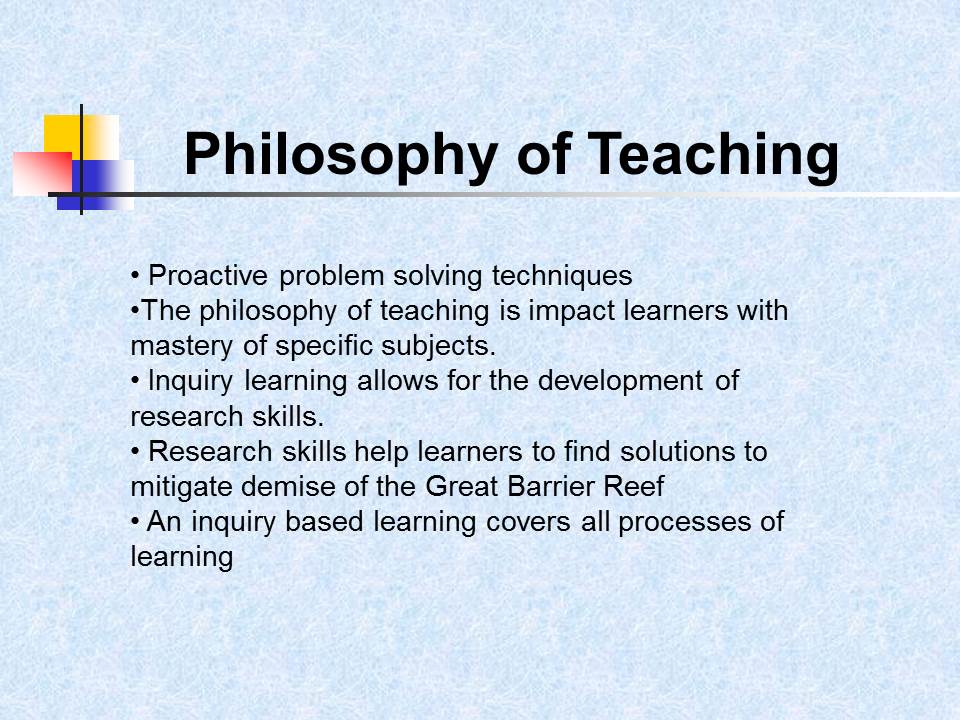
Aspects of inquiry-Based Learning
- The inquiry approach develops problem solving skills.
- The approach focuses more on the student.
- Through active involvement, the student is able to construct knowledge.
- Inquiry learning makes the process effortless since the students are more excited.
Inquiry based learning has become popular in the recent past. The reason for this is the various advantages it is associated with. It will help the year four class students, who are the target of this lesson plan.
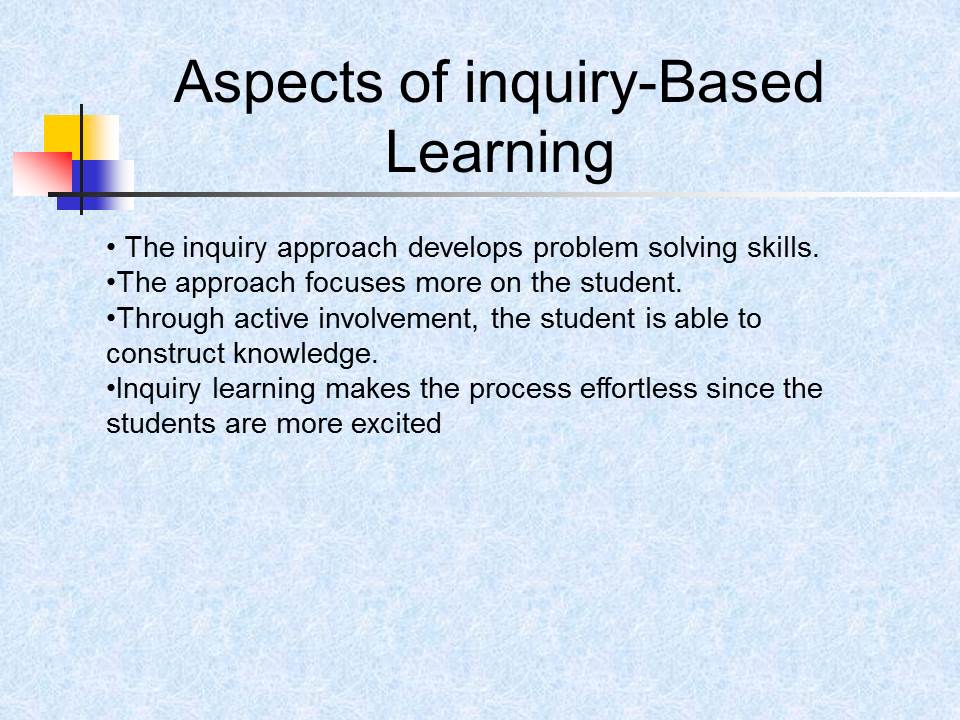
Five Models of Inquiry
Inquiry Based Learning Models:
- Murdoch;
- Hornsby;
- 5 Es;
- Problem Based;
- IB.
There are five main models of inquiry based learning. The models are essentially meant to create interest in the learning endeavour. They include:
- Murdoch Model: Supports thinking and conversation. Students get to hypothesis solutions to problems.
- Hornsby Model: The students should gather relevant material touching on the subject.
- IB model: The learners develop research skills and are allowed to solve existing problems.
- Problem Based Model: The learning process allows the students to learn about a subject by solving the problems at hand. Learners get a first hand experience of solving problems.
- Es model: A constructivist approach to learning. Requires learners to build upon their existing ideas of a subject. Shawer (2010) argues that the five Es explain all the phases that make up for the learning process. The process is as indicated; Enngage>Explore>Explain>Elaborate>Elaborate. A constructivist approach to the coral issue can be seen in the case where the students are allowed to demonstrate suitable solutions. Consequently the learning process is student based.
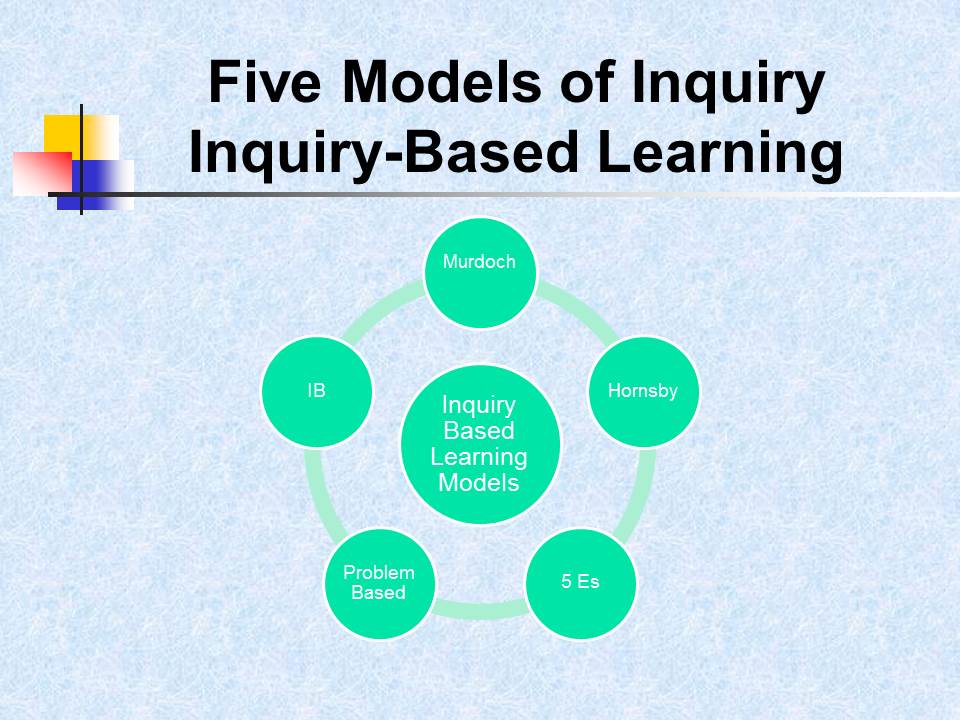
The Murdoch Model
- Generative questions.
- Understanding skills and values.
- Tuning in.
- Finding out.
- Sorting out.
- Going further.
- Concluding and acting.
The Murdoch model creates an inquiry journey. The elements listed ensure that the inquiry process is covered in its various stages (Fisher, 2003). The generative questions seek to establish the reasons behind a given phenomenon. For instance, the learners are asked “why is the coral dying?”. The model allows for students to assess skills and understand a given subject at the beginning and end of every unit. Tuning in allows the students to gather existing information about a subject. The same allows for brainstorming to develop new concepts.
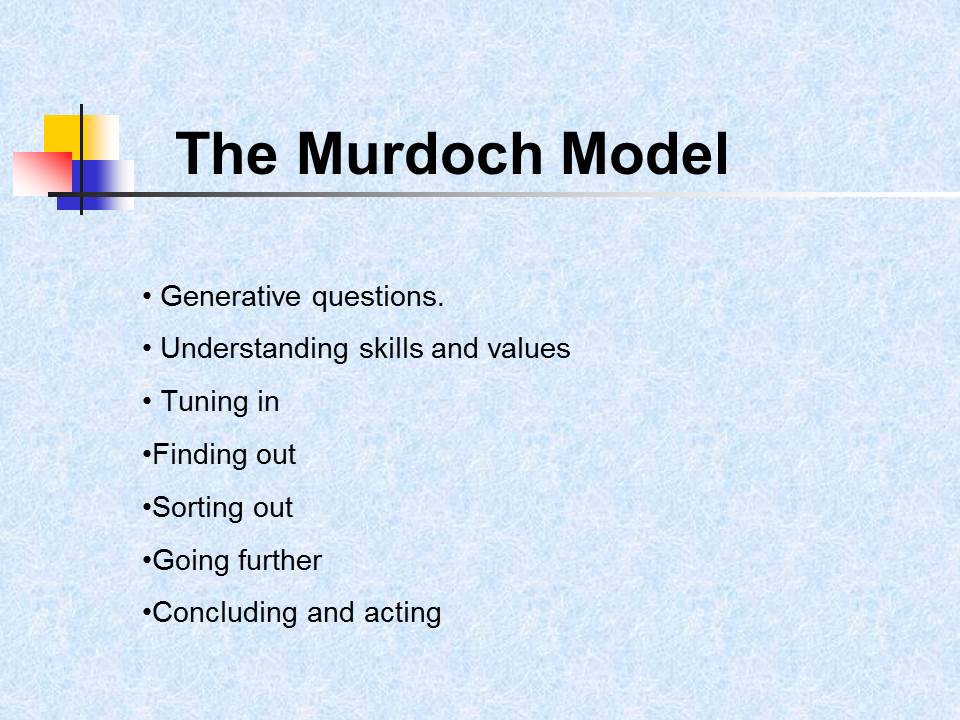
Bloom’s Taxonomy
Based on the Bloom’s taxonomy, the student can carry out sequential activities associated with learning as indicated in the pyramid. The activities begin with knowledge, understanding, and application. The other steps include application of the knowledge and understanding gained, and analysis of the same. The last steps are synthesis and evaluation (Fisher, 2003). The steps can be followed in inquiring about the coral deaths.
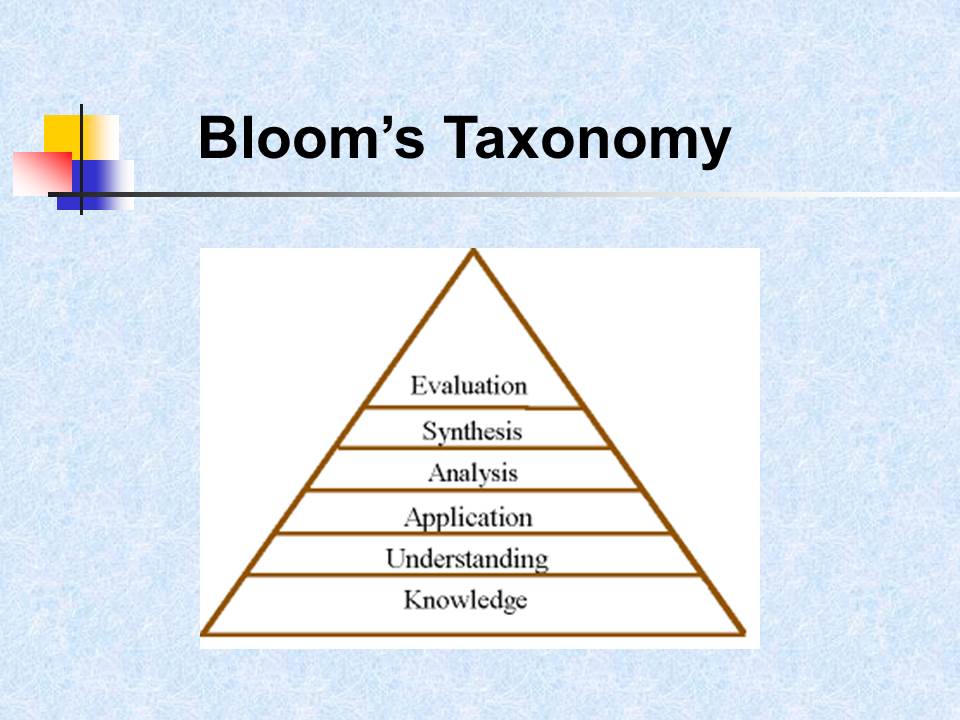
Source of the Curriculum Direction
Subject areas Australian curriculum:
- Science;
- History;
- Geography.
The lesson plan will be developed basing on three main subject areas. In the first place, Geography will be used owing to the need to locate the actual position of the reefs. Basing on the Australian curriculum, the lesson plan will entail the examination of physical properties of reefs and the effects of human activities on the same. The lesson plan will also factor in science subjects. The death facing the coral reefs is a scientific phenomenon. To this end, scientific techniques will be required to solve the menace. Specifically, the lesson plan will include aspects of endangered species. History is also used as a part of the teaching plan. Specifically, the lessons on physical features.
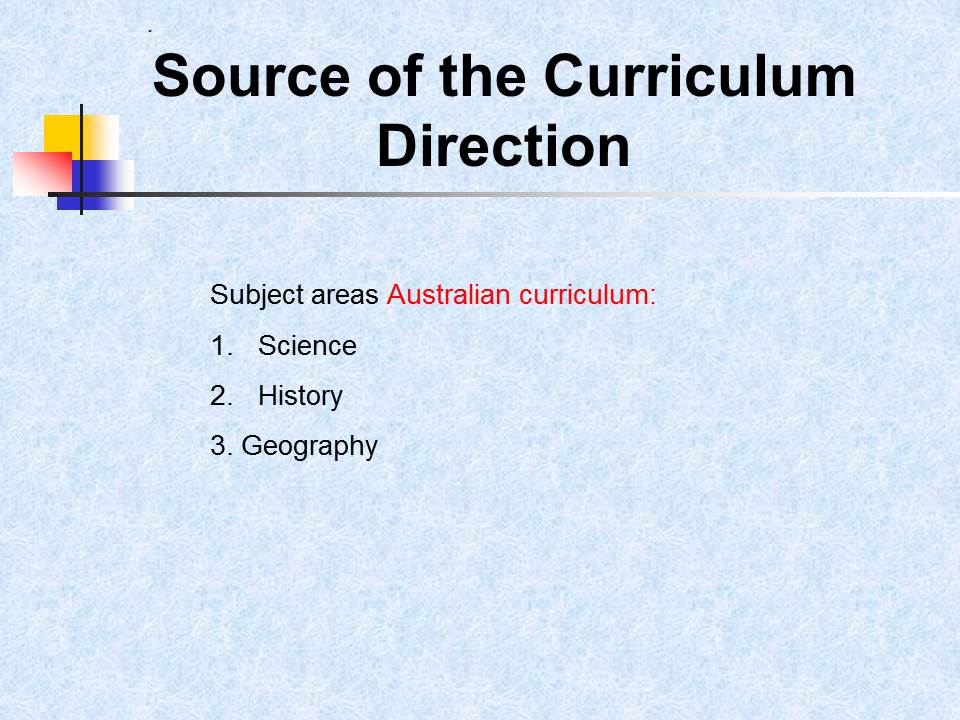
Making use of Multiple Resources
- The national directorate for schools requires the use of multiple sources.
- Multiple sources allow the students to have a variety of options regarding their study.
- Experts recommend the use of multiple resources in an investigative research model.
The various sources of curriculum direction recommend the inclusion of several resources in the learning process. Given that inquiry learning is centred on the student, it is important to have more than one resource to make the research fruitful (Bleazby, 2012).
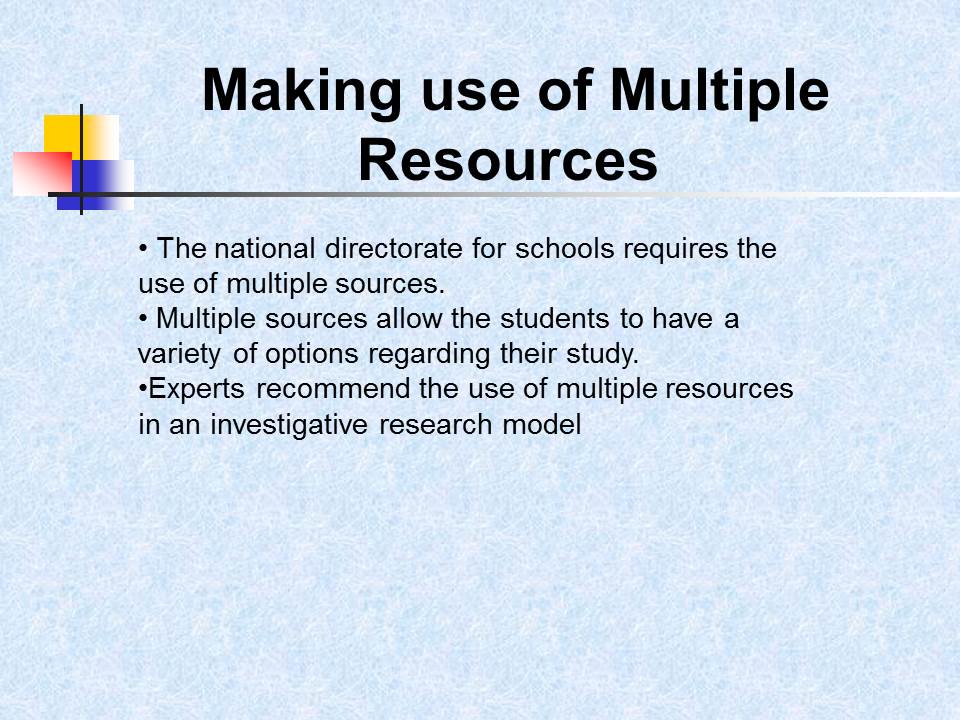
The Teacher as a Facilitator
- The learning process requires a facilitator,
- Teachers have an oversight role in the learning process.
- They provide guidelines on key subject areas.
- When students are stuck, the teacher offers advice on possible solutions.
The objective of the proposed inquiry teaching is to allow the student to carry out learning tasks. However, the teacher needs to step in at some point to offer guidance (Bleazby, 2012; Fisher, 2003). The role of the teacher should, however, not mask that of the students (Beane, 1995). Inquiry learning is meant to allow the learner to have an active role in the education process.
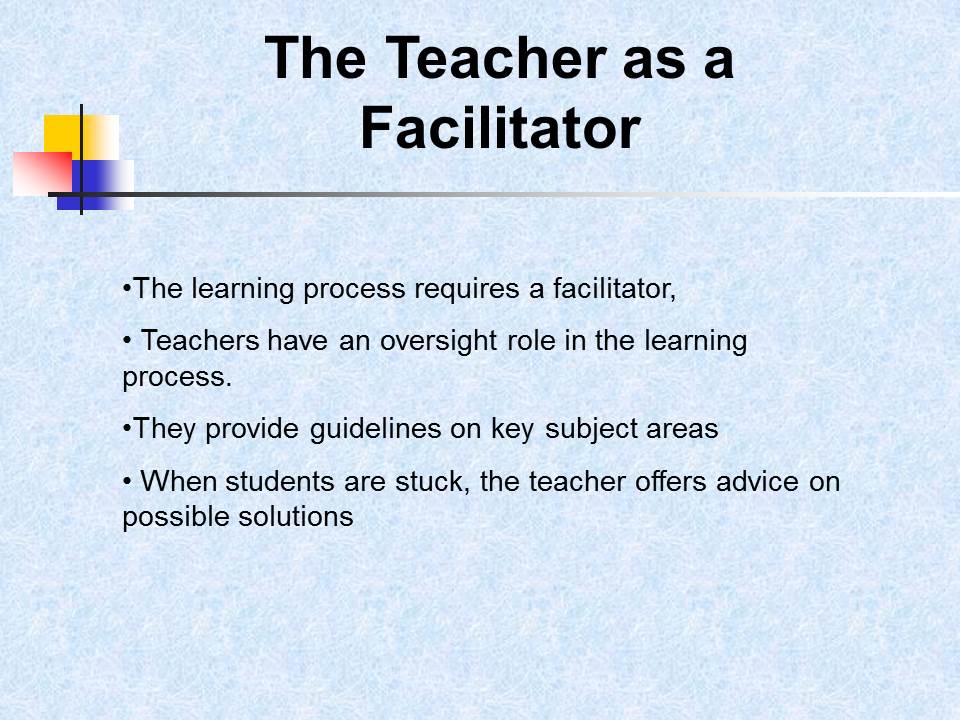
Teacher as a Facilitator
What it means to facilitate a class:
- Managing interactions among students;
- Providing encouragement;
- Evaluating the research undertaken by learners;
- Identifying the challenges faced by the students;
- Providing solutions to classroom challenges.
The classroom setting provides the teacher with unique challenges. To facilitate the learning process, the teacher is expected to handle the engagements between the students. In addition, they should provide encouragement, especially to those learners who are facing difficulties (Beane, 1995). The investigations on the death of coral may require the students to carry out a number of projects. The teacher should facilitate learning by evaluating the research process. The challenges faced should be addressed by providing possible solutions.
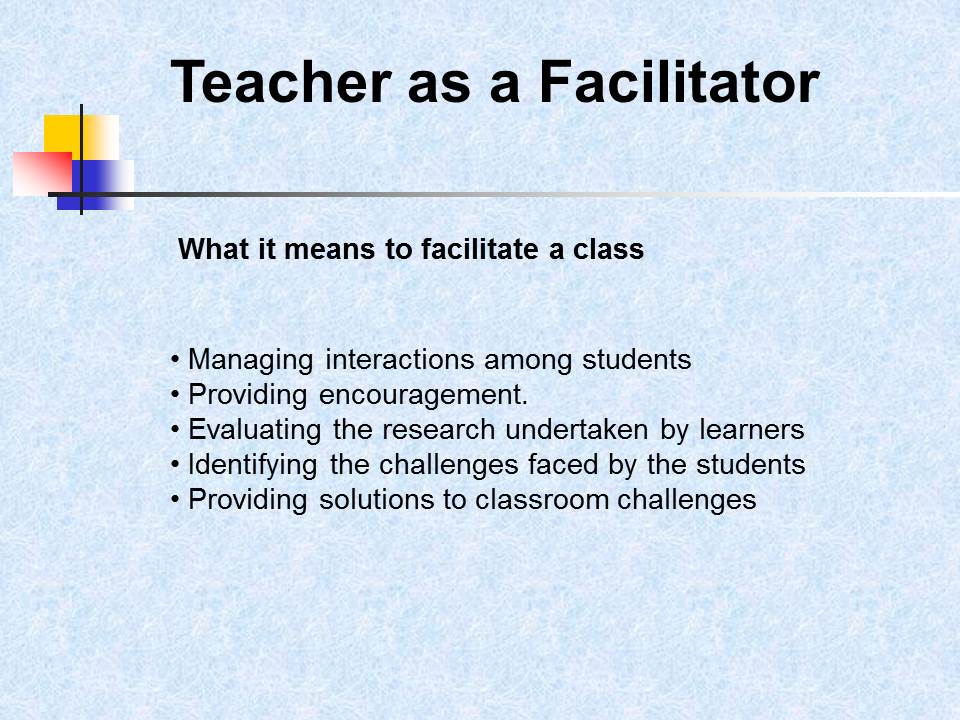
Results of an Inquiry-Based Learning
The inquiry process allows students to acquire important skills. The process also ensures that the students learn the importance of team work. The curiosity of the process allows the learners to delve deeper into research. Some of the subject areas include music, art, painting, science and engineering.
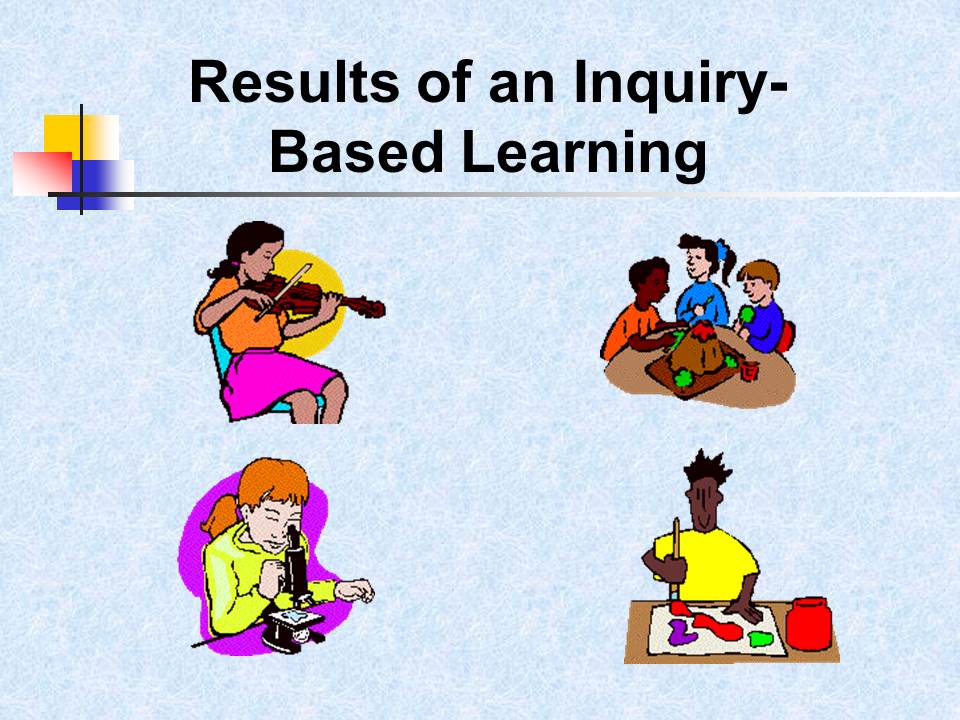
Lesson Plans
- objectives;
- Materials;
- Lesson Steps;
- Assessment;
- Key questions.
A lesson plan must incorporate several aspects on an inquiry learning model. In the current arrangement the lesson plan will entail five key features. There will be two main lesson plans to be used in the inquiry learning model. The first plan will be about the Great Barrier Reef while the second plan will examine aspects about coral reefs.
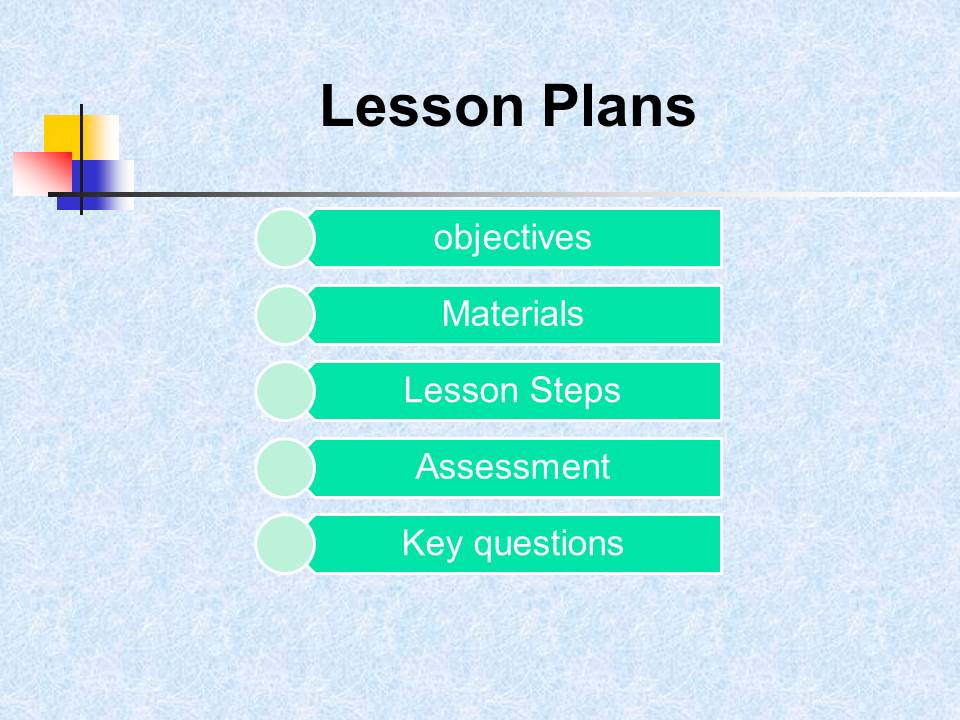
Assessment Strategies
- Screening;
- Specificity;
- Data Collection;
- Presentation skills;
- Language.
According to Littleton (2012), assessment is based on the following:
- Screening: Assessing whether the student has used the correct observation and assessment criteria or not.
- Specificity: Analysing whether the learner was particular in their research or not.
- Data collection: Examining whether or not the data collected is relevant.
- Presentation: Analysing the appropriateness of the mode of presentation.
- Language: Assessing whether or not the students have used the correct language.
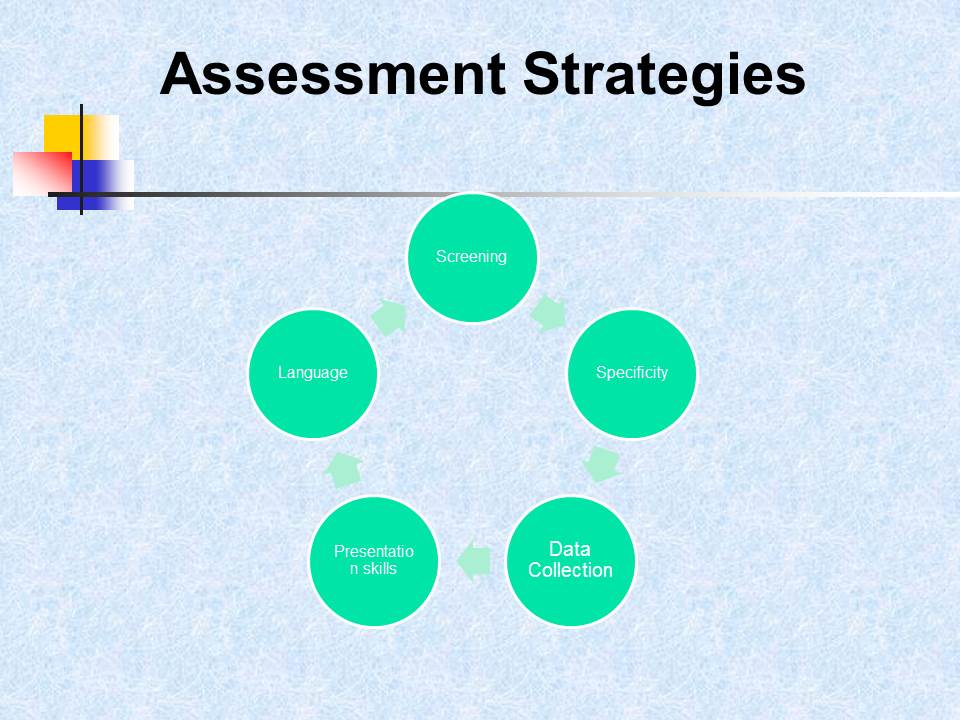
Assessment
Assessment in Inquiry Learning:
- Diagnostic;
- Formative;
- Summative.
Assessment is essential in the improvement of student learning. Carrying out an assessment on the inquiry model requires a number of tools. Rubrics are used, in such cases, to set an assignment criteria. Also, the assessment makes use of communication as one of the tools. In essence, the assessment criteria involves three main stages. The Diagnostic, Formative and the Summative stages of assessment are used in the evaluation of.
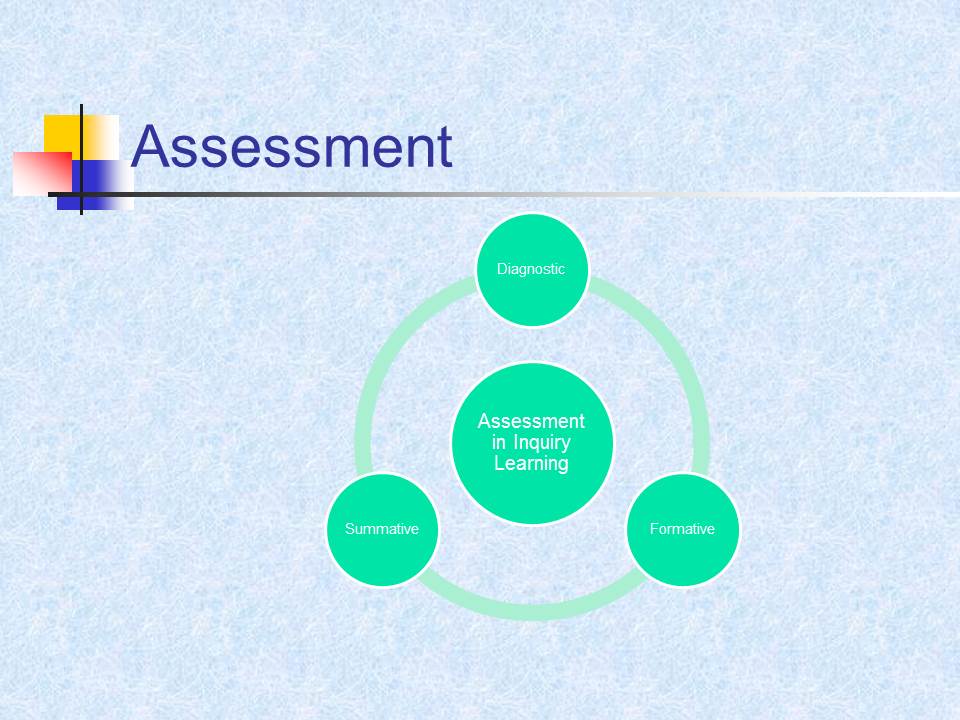
Making Inferences
- Thinking ‘outside the box’;
- Seeking for clues;
- Brainstorming;
- Guidance from the teacher;
- Case studies.
Inferences involves reasoning from factual knowledge. It entails inductive and deductive reasoning (Shawer, 2010). Several strategies can be used to achieve this objective. They include case studies and brainstorming. The case study of the coral reef can be used, and students can brainstorm about it in class. The teacher will guide the whole process.
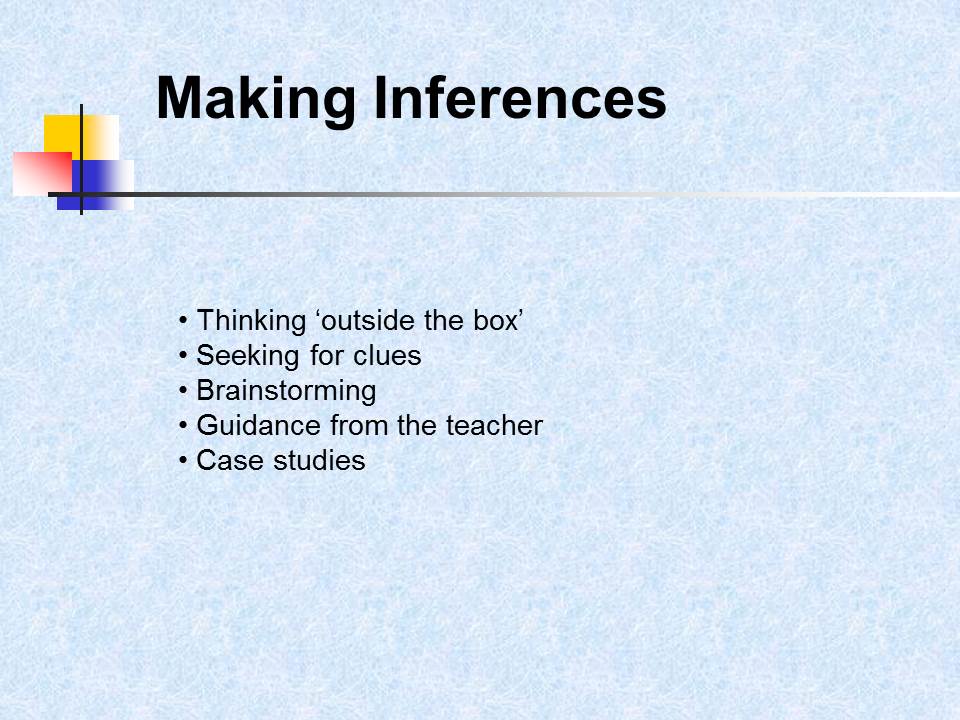
Examples of Inference Questions
- What conclusions can you draw by looking at the coral reef?
- How did the researcher feel about the death of the coral?
- What can be done to salvage the situation?
- What causes the death of corals?
The inference questions should be relevant to the subject matter. In this case, the questions apply to the death of the coral reef under investigation. The questions will guide the students in coming up with solutions and gaining knowledge in the process.
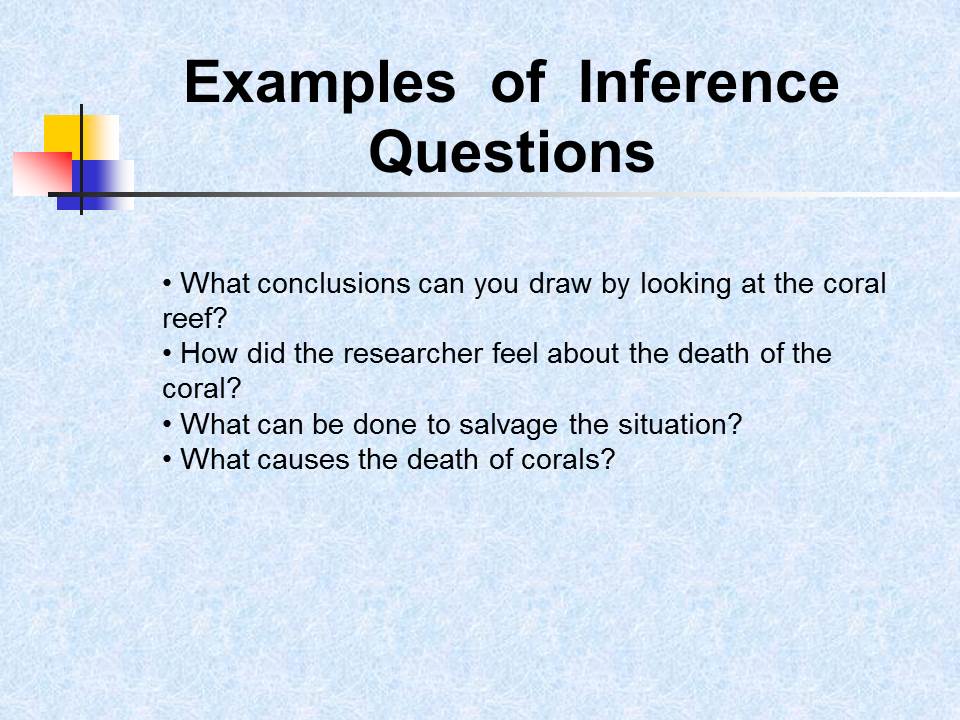
Interpretation Questions
- Students are asked to predict the consequence of the total demise of coral reefs.
- They are asked to use previous knowledge on marine conservation to solve the crisis.
Just like in the case of inferences, interpretation questions should be relevant to the subject matter. They are meant to help the students process information in the death of coral reefs.
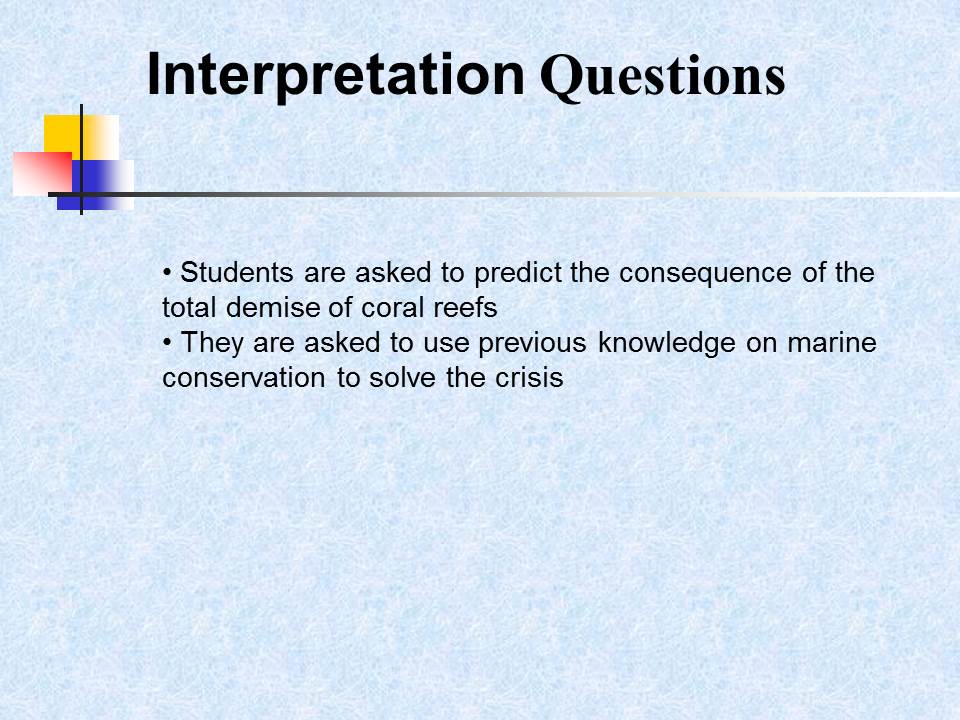
Thinking Strategies
- The use of hypothesis;
- Making comparative analyses;
- The use of case studies;
- How brainstorming can be used to generate new ideas;
- How to question existing ideas.
The teacher will help the class to come up with a hypothesis about the death of corals. After this, comparative analyses of different case studies will be conducted in efforts to test the hypothesis. Brainstorming will be encouraged to elicit information from the learners. In addition, the teacher will help the learners to question information existing about death of coral reefs around the world (Littleton, 2012).
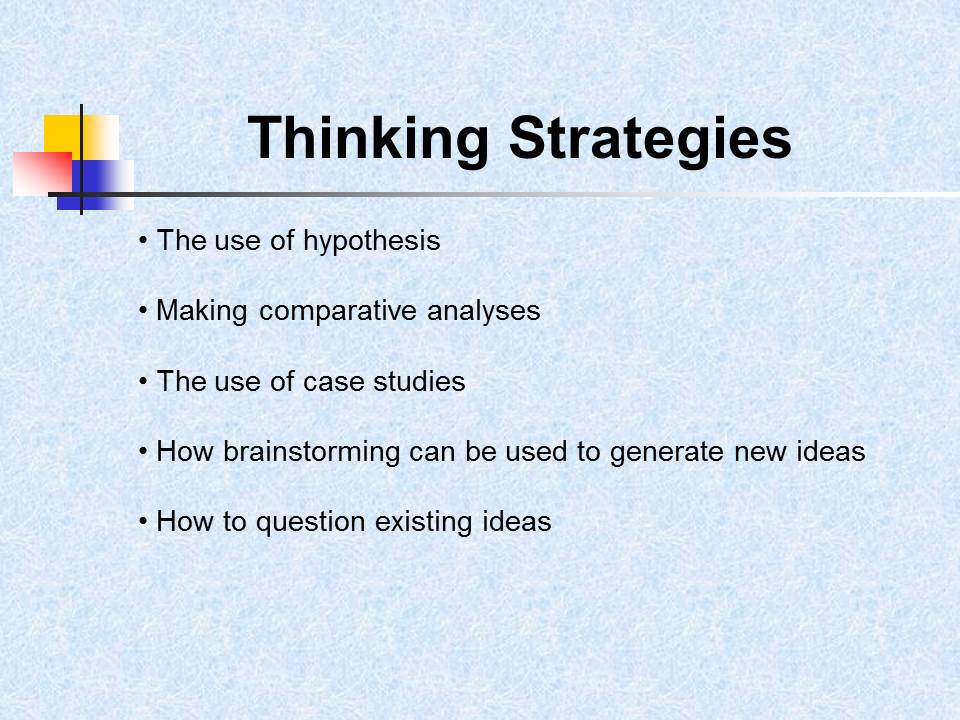
Example of a Thinking Strategy
”If we do not care about the death of the Great Reef Barrier, then we will have failed the planet”.
The hypothesis will be developed and used as a strategy to help the students to carry out research (Littleton, 2012). It will elicit interest in the subject matter.
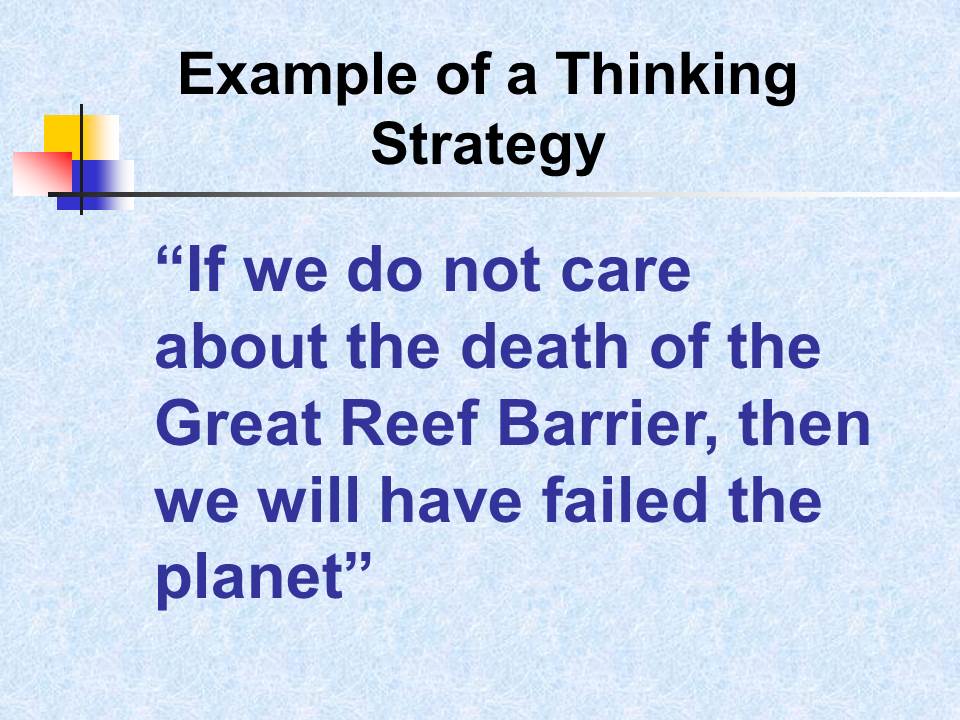
The use of Reflective Questions
- Students will be asked to re-evaluate their initial stands.
- They will discuss questions that will prompt further research on the subject.
Reflective questions are thinking strategies that can assist the learners to research more on a given subject (Minstrell & Zee, 2000). In this case, the students will be able to conduct more research on coral reefs in general and specifically on the death of these features.
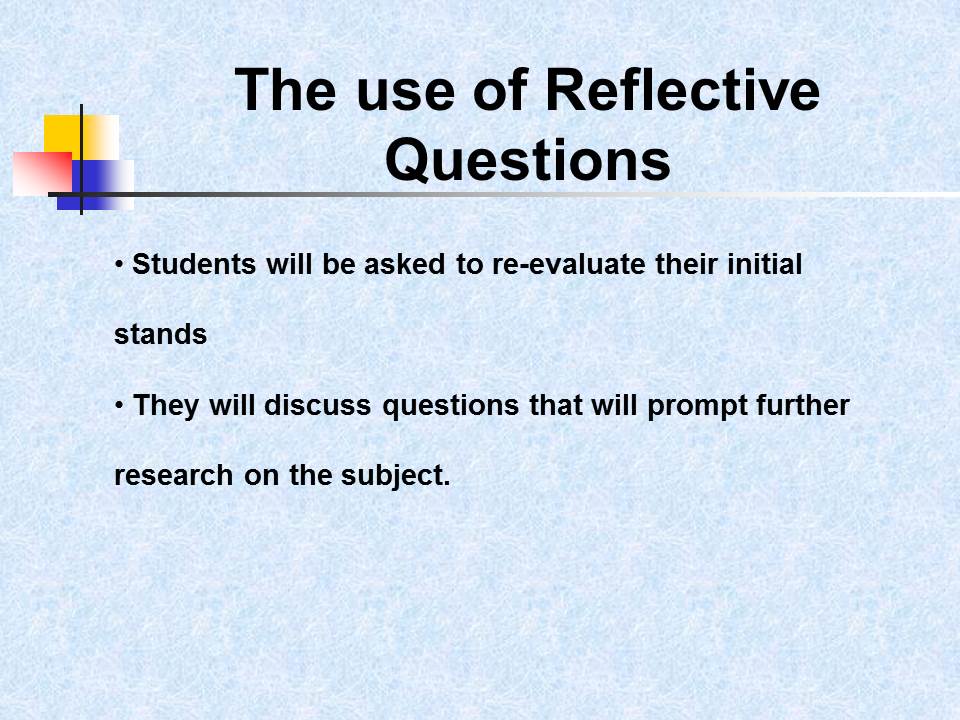
How to Plan an Inquiry Lesson
Develop a topic for learning:
- Come up with some questions to ask the students.
- Allow the students to ask questions.
- Ensure the learners can discuss the topic among themselves.
- Allow the students to conduct research.
The topic is the death of the coral reef. Questions will be posed as to the probable causes of this death and how it can stopped.
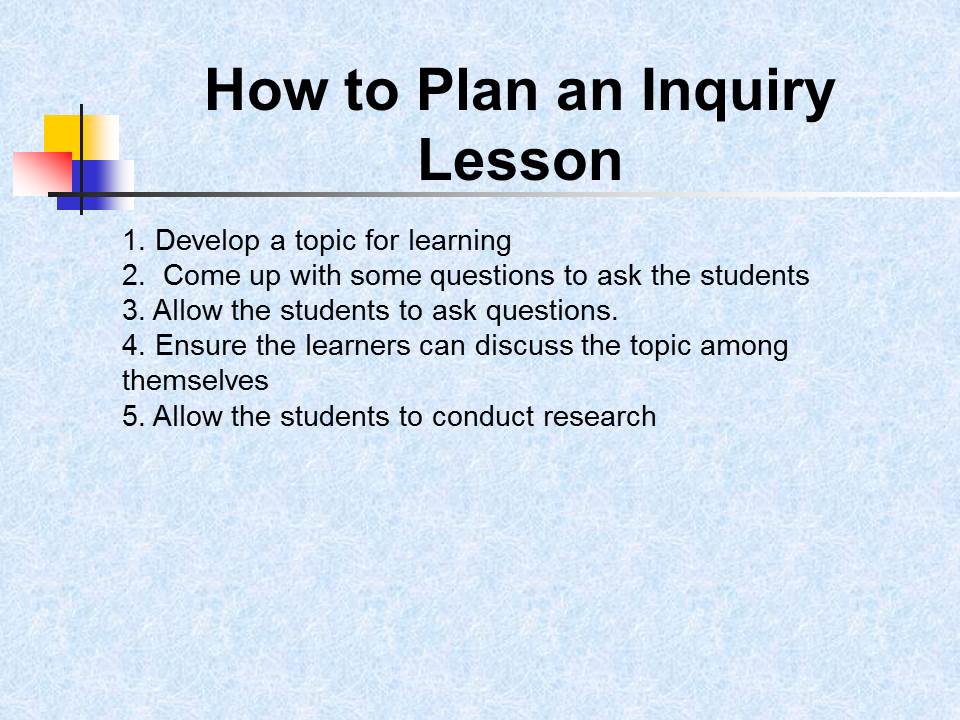
Importance of Inquiry Based Learning
- Allows for active participation in class.
- Helps students to develop interest in a given subject.
- Improves interactions among learners.
- Allows the students to master the subject through acquisition of different skills.
The learners will be encouraged to actively participate in the learning process (Moog & Spencer, 2008). The aim is to help them develop interest in coral reef and conservation of environment. In addition, the brainstorming activities and field trips to the coral reef will be socially beneficial to the learners. They will be able to interact with others and master the subject effectively.
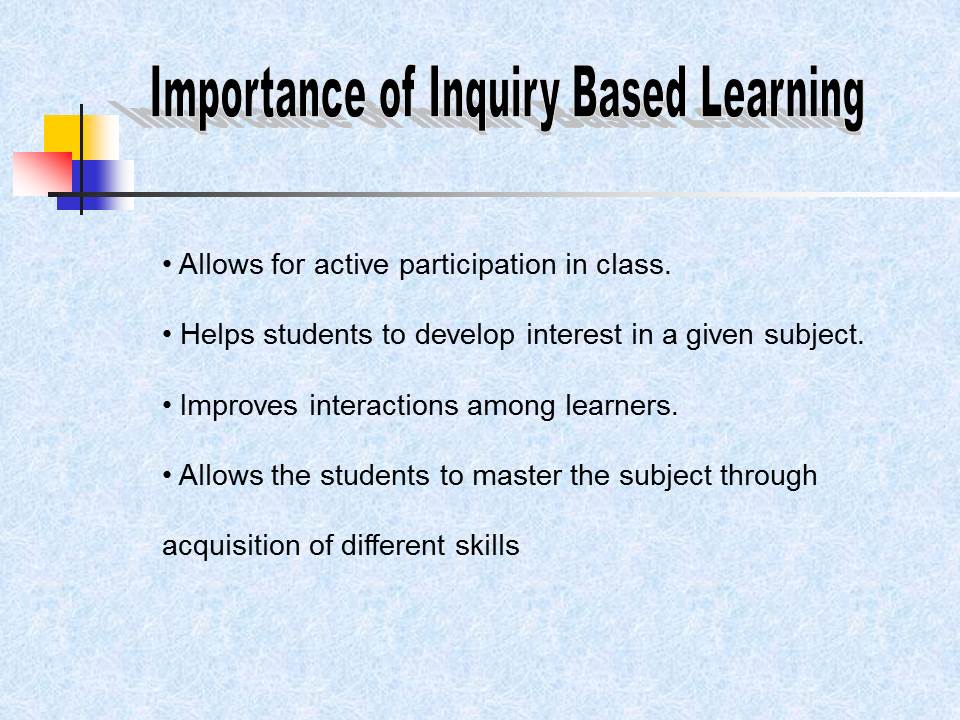
References
Beane, J. (1995). Curriculum integration and the disciplines of knowledge. The Phi Delta Kappan, 76(8), 616-622.
Bleazby, J. (2012). How compatible are communities of inquiry and the internet?: Some concerns about the community of inquiry approach to e-learning. E-Learning and Digital Media, 9(1), 1-2.
Fisher, T. (2003). Teacher professional development through curriculum development: Teachers’ experiences in the field trialling of on-line curriculum materials. Technology, Pedagogy and Education, 12(3), 329-343.
Littleton, K. (2012). Orchestrating inquiry learning. New York, NY: Routledge.
Minstrell, J., & Zee, E. (2000). Inquiring into inquiry: Learning and teaching in science. Washington, D.C.: American Association for the Advancement of Science.
Moog, R., & Spencer, J. (2008). Process oriented guided inquiry learning (POGIL). Washington, D.C.: American Chemical Society.
Nolan, J., & Hunsinger, J. (2007). Editorial: Introducing learning inquiry. Learning Inquiry, 1(1), 1-5.
Shawer, S. (2010). Communicative-based curriculum innovations between theory and practice: Implications for EFL curriculum development and student cognitive and affective change. Curriculum Journal, 21(3), 333-359.